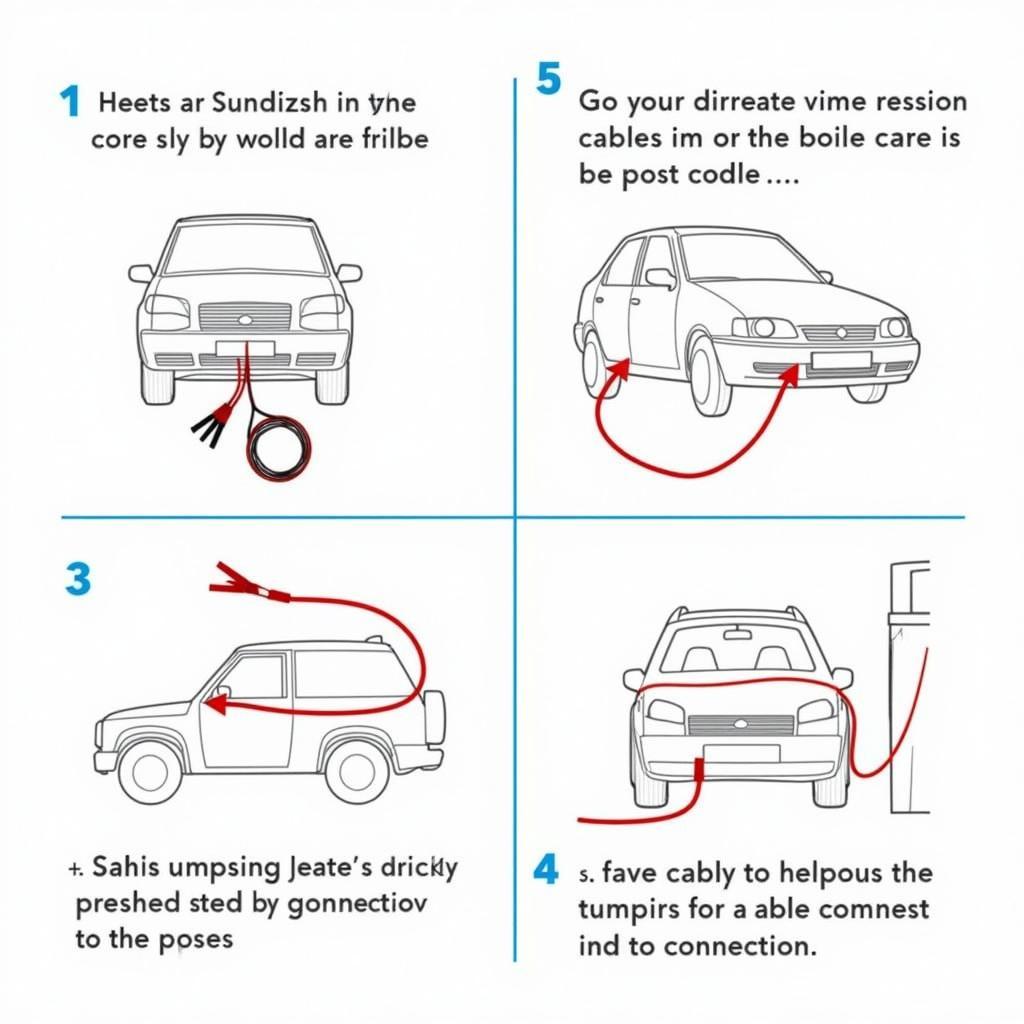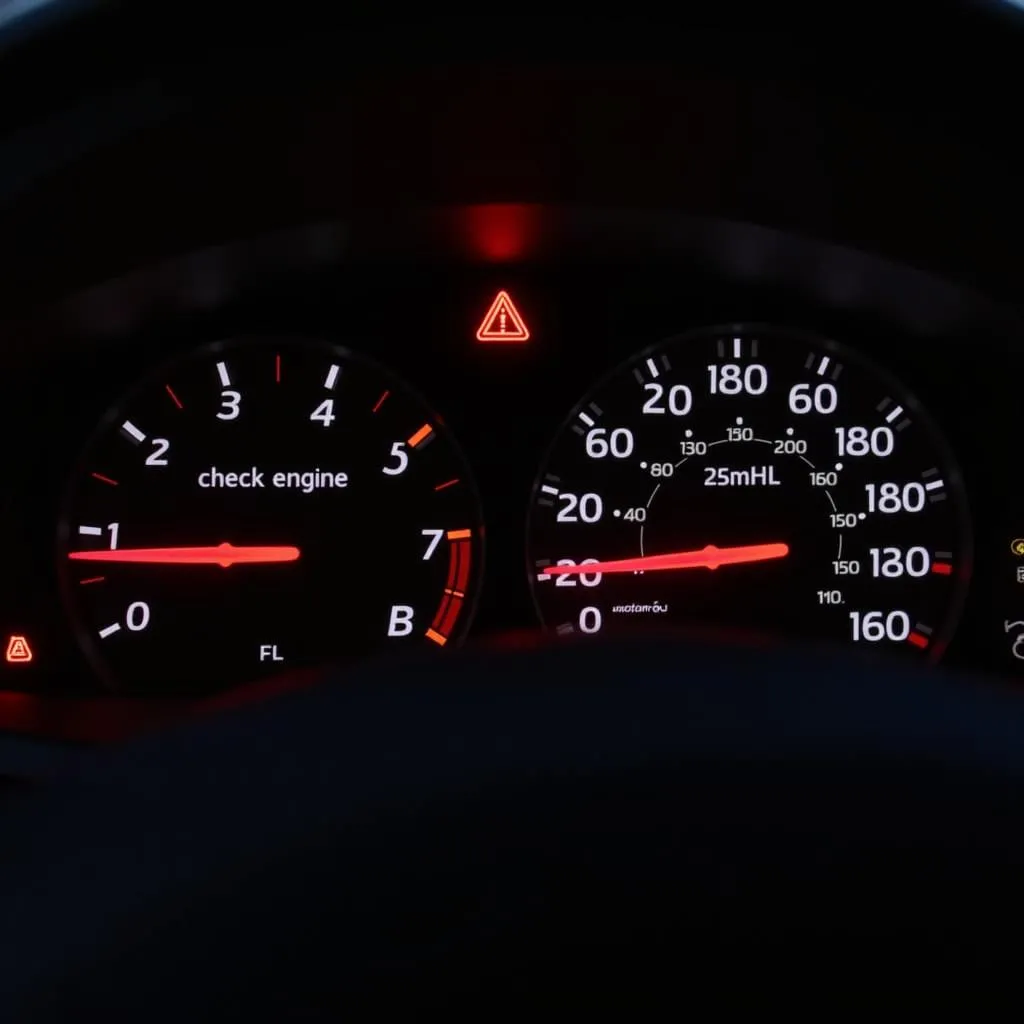Car won’t start is it the battery? This is a common question, and often the first thought when your vehicle refuses to turn over. While a dead battery is a frequent culprit, it’s not the only possibility. This guide delves into the various reasons your car might not be starting, focusing on the battery, and providing diagnostic steps and solutions.
If your car struggles to start or you recently encountered issues such as a dim battery warning light, this article will offer valuable insights. We’ll explore how to diagnose battery problems, other potential starting issues, and even discuss what to do if you’ve replaced battery but car still wont start. So, let’s dive in and get your car back on the road! If you’re experiencing issues with your car’s Bluetooth, check out why wont my bluetooth connect to my car radio for solutions.
Diagnosing Your Car Battery
A dead battery is often the easiest starting problem to fix. Here’s how to check if your car battery is the culprit:
- Headlights Test: Turn on your headlights. If they are dim or flicker, this indicates a low battery charge. If they don’t come on at all, the battery could be completely dead or there might be another electrical fault.
- Dashboard Lights: When you turn the key to the “on” position (without starting the engine), observe the dashboard lights. Dim lights suggest a weak battery.
- Clicking Sound: When you try to start the car, do you hear a rapid clicking sound? This is a telltale sign of a dead or dying battery struggling to power the starter motor.
- Slow Cranking: If the engine cranks slowly and sluggishly, the battery might not be providing enough power.
- Visual Inspection: Check the battery terminals for corrosion. White, powdery buildup can prevent the battery from properly connecting to the electrical system.
Beyond the Battery: Other Starting Problems
Even if the battery appears to be the issue, other components can contribute to starting problems.
- Starter Motor: The starter motor engages the engine’s flywheel to initiate the combustion process. A faulty starter can exhibit similar symptoms to a dead battery, such as clicking sounds or slow cranking.
- Alternator: The alternator recharges the battery while the engine is running. A faulty alternator can drain the battery, preventing the car from starting. If you suspect your alternator is the issue, read our guide on dim battery warning light.
- Ignition System: The ignition system provides the spark that ignites the fuel-air mixture in the engine cylinders. Problems with the ignition switch, coil, or spark plugs can prevent the car from starting.
- Fuel System: The fuel pump delivers fuel to the engine. A malfunctioning fuel pump or a clogged fuel filter can prevent the engine from receiving the necessary fuel to start.
- Electrical Connections: Loose or corroded connections throughout the electrical system can interrupt the flow of power, preventing the car from starting.
“A common mistake people make is assuming it’s always the battery,” says automotive expert, John Thompson, ASE Certified Master Technician. “While a dead battery is a frequent cause, a proper diagnosis is crucial to avoid unnecessary replacements.”
What To Do If Your Car Won’t Start
- Jump Start: If you suspect a dead battery, try jump-starting the car using jumper cables and another vehicle or a portable jump starter. Be sure to connect the cables correctly to avoid damage.
- Check Connections: Inspect the battery terminals and cables for corrosion. Clean any corrosion with a wire brush and baking soda solution. Secure the connections tightly.
- Test the Battery: Use a multimeter to test the battery voltage. A fully charged battery should read around 12.6 volts. A lower reading indicates a discharged battery.
- Seek Professional Help: If you’re unsure about the cause or unable to fix the problem yourself, take your car to a qualified mechanic for diagnosis and repair. Sometimes even if you’ve replaced battery but car still wont start, there’s an underlying issue needing professional attention.
 Jump Starting a Car Correctly
Jump Starting a Car Correctly
Conclusion
“Remember,” advises Susan Miller, Automotive Electrical Systems Engineer, “regular battery maintenance, like cleaning terminals and checking the charge, can prevent many starting problems.” So, when your car won’t start is it the battery? Maybe, maybe not. By following the diagnostic steps outlined in this guide, you can pinpoint the issue and get back on the road. For additional information about car battery issues, see my new car battery is dead.
FAQ
- How long does a car battery last? Typically, 3-5 years.
- Can I drive with a bad alternator? Not for long, as it will eventually drain the battery completely.
- How much does a new car battery cost? Prices vary depending on the type and size of the battery, generally between $50 and $200.
- What are signs of a failing starter motor? Clicking sounds, slow cranking, or no response when turning the key.
- Can extreme temperatures affect a car battery? Yes, both extreme heat and cold can shorten a battery’s lifespan.
- How do I know if my alternator is bad? Dim headlights, flickering dashboard lights, and a dying battery are common signs. Read our guide on the bluetooth radio channel for car for more information on different radio channels.
- What should I do if my car won’t start after a jump start? The problem likely lies beyond the battery. Consult a mechanic.

